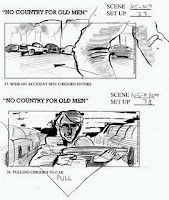Go to http://ocrmediastudies.weebly.com/coursework-with-levels.html and make a post summarise what you have learned from previous projects.
You should focus on what aspects you thought were good and would aspire to do and reflect on what you need to avoid- do not be insulting about footage but constructive in your criticism.
Screengrabs are fine but please avoid Tubechops for this. Please bear in mind the marking criteria when discussing what you have learned, so don't discuss acting.
• material appropriate for the target audience and task;
• using titles appropriately according to institutional conventions;
• using sound with images and editing appropriately for the task set;
• shooting material appropriate to the task set;, including controlled use of the camera, attention to framing, variety of shot distance and close attention to mise-en-scene;
• using editing so that meaning is apparent to the viewer and making selective and appropriate use of shot transitions and other effects.
You should focus on what aspects you thought were good and would aspire to do and reflect on what you need to avoid- do not be insulting about footage but constructive in your criticism.
Screengrabs are fine but please avoid Tubechops for this. Please bear in mind the marking criteria when discussing what you have learned, so don't discuss acting.
• material appropriate for the target audience and task;
• using titles appropriately according to institutional conventions;
• using sound with images and editing appropriately for the task set;
• shooting material appropriate to the task set;, including controlled use of the camera, attention to framing, variety of shot distance and close attention to mise-en-scene;
• using editing so that meaning is apparent to the viewer and making selective and appropriate use of shot transitions and other effects.












